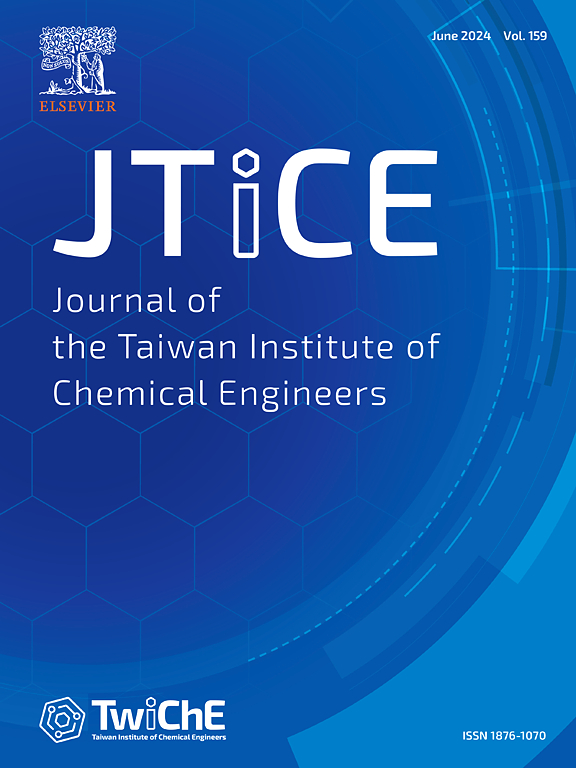Tailoring the surface topography and crystallinity of Au0 sensitized ZnO Schottky heterojunction for enhanced photocatalytic degradation of tetracycline
IF 5.5
3区 工程技术
Q1 ENGINEERING, CHEMICAL
Journal of the Taiwan Institute of Chemical Engineers
Pub Date : 2025-04-01
DOI:10.1016/j.jtice.2025.106078
引用次数: 0
Abstract
Background
The release of antibiotics into the soil and aquatic ecosystem has become the main concern leading to significant ecological imbalance and adversely affect human health. Unlike other pollutants, antibiotics are designed in such a way with good stability to treat human diseases. Even though it has several advantages, the prolonged existence and resistance to breakdown in environmental settings is a major concern.
Methods
In this work, Au0 sensitized ZnO Schottky heterojunction was engineered for the enhanced photocatalytic degradation of tetracycline (TC) under visible light irradiation. Here, ZnO was synthesized by simple co-precipitation method and the incorporation of Au onto the ZnO was performed via a double boiling-assisted reflow method.
Significant findings
The crystalline structure of Au@ZnO yolk in shell (AZYIS) was validated by XRD analysis and the HR-TEM imaging. The other characteristic properties such as structural, optical properties, etc., were demonstrated by SEM, UV–Vis DRS, XPS, EIS, PL and BET analysis. Here, ATYIS outperformed than pristine ZnO by achieving higher degradation rate of TC. The performance of the nanomaterial after six cycles were almost identical to the first cycle of degradation. The degradation of TC was enhanced by the participation of photogenerated radical species. The degradation pathway and the toxicity of the intermediates were analyzed using GCMS/MS analysis and ECOSAR, respectively. Further, the work conducted on AZYIS signifies that the unique design and the Schottky heterojunction significantly enhanced the stability, performance and reusability for sustainable wastewater remediation.

求助全文
约1分钟内获得全文
求助全文
来源期刊
CiteScore
9.10
自引率
14.00%
发文量
362
审稿时长
35 days
期刊介绍:
Journal of the Taiwan Institute of Chemical Engineers (formerly known as Journal of the Chinese Institute of Chemical Engineers) publishes original works, from fundamental principles to practical applications, in the broad field of chemical engineering with special focus on three aspects: Chemical and Biomolecular Science and Technology, Energy and Environmental Science and Technology, and Materials Science and Technology. Authors should choose for their manuscript an appropriate aspect section and a few related classifications when submitting to the journal online.

 求助内容:
求助内容: 应助结果提醒方式:
应助结果提醒方式:


